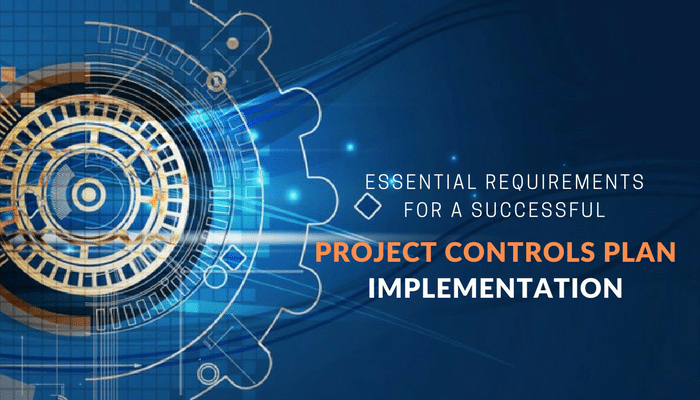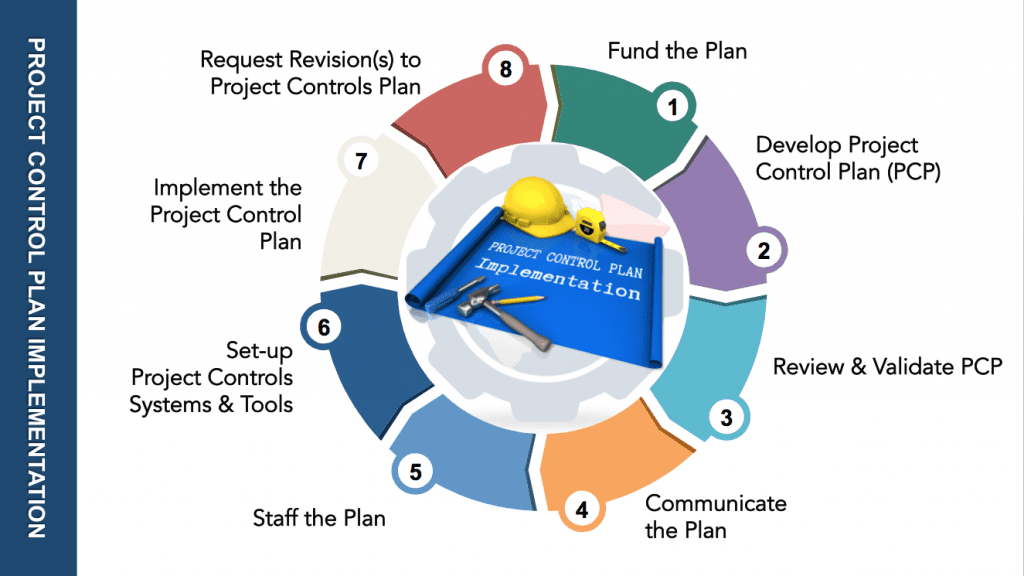Project Controls Plan (PCP) is a well-defined documented Project Controls execution strategy that describes specific processes, procedures, systems, & tools used by the Project Control team throughout the project lifecycle.
According to AACE® International RP No.60R-10, “ The use of a project controls plan is considered a leading indicator for assisting in the success of the delivery of the project. The time invested in preparing, documenting, and communicating a solid project controls plan will increase the success of the execution of the project.”
Although documenting the Project Controls Plan is essential for project success, it is NOT enough. There are other requirements that contribute to a successful Project Controls plan implementation. Watch this video to figure out what those essential requirements are.
Download the free audio mp3 podcast of this episode on iTunes.
Want more training? Subscribe to Project Control Academy to receive complimentary training videos and resources delivered to your mailbox.
Project Control Quotes to Consider: Join Project Control Academy on Instagram for tons of great quotes.
1. Fund the Plan
One of the basic yet essential requirements for the successful Project Controls Plan implementation is funning the plan. The project must budget for it. If not budgeted properly, the project control team would have a hard time to provide accurate, consistent, and timely project information.
Lack of proper funding is a typical issue in many projects. Project Controls function is usually under-funded. I believe this stems from lack of understanding of the extent of work that the project control team must perform on a project. I’ve experienced such projects many times. However, I believe with proper education and consistently showing the value that the project control team can bring to the table, you can slowly overcome the funding issue for Project Controls disciplines.
Sometimes the project is really small and there is neither enough budget not time or resources to develop a detailed project specific project controls plan for the project. In these situations, a good approach is developing a generic Project Controls Plan for small projects, where those projects are expected to follow similar structure and execution strategy.
2. Develop Project Control Plan (PCP)
The next step for a successful Project Controls Plan implementation is the development and documentation of the plan itself.
More details about the project controls plan can be found in other videos, “What kind of a plan is a Project Controls Plan,” and “The components of the Project Controls Plan.”
3. Review and Validate PCP
Once the Project Controls Plan is developed, it needs to be reviewed and validated by the project team.
The reason for a formal review and approval is to:
- Determine whether the project controls plan provide the required information and is suitable as a basis for control
- Ensure compliance with the company policies and procedures
- Ensure compliance with the project objectives and requirements
- Assess alignment with industry best practices and guidelines
Another reason for a review and authorization process is to establish an official document to comply with throughout the project life cycle.
4. Communicate the Plan
No matter how well you have defined the Project Controls Plan and how much effort you have invested in its development, it will not lend to the results you envisioned if you don’t communicate it properly to the project team.
Many people stop after the previous step. Once they document and authorize the project controls plan, they archive it on a project folder or Intranet or publish it to the team with no further communications. This will reduce the effectiveness of the plan tremendously and might lead to the waste of time and effort in its development in the first place.
To make the project controls plan work, it needs to be communicated to the project team. An effective approach to do so is organizing an orientation meeting/ workshop with all control account managers and team leads. The Project Control Lead/Manager typically facilitates this meeting and walks everyone over the Project Controls Plan using some hands-on examples and what-if scenarios.
5. Staff the Plan
The project controls plan will be operational if the right staff is assigned and dedicated to the project.
The number of staff assigned to a project depends on several factors such as the size and complexity of a project, contract type, required deliverables, and level of details.
For smaller projects, the project manager, project leader, or a designate may manage the project control process. For larger projects, discrete staff may be required to handle functional aspects of the project controls responsibilities, such as cost estimator, cost controller, planner/scheduler, etc.
6. Set-up Project Controls Systems & Tools
The first step in the implementation of the project controls process is setting up related systems and tools. This includes creating coding structures in various systems, mapping out the relationships between coding requirements in reference to the systems and their requirements, providing access and security rights to specific systems/tools, developing project reporting templates, and much more.
7. Implement the Project Control Plan
According to AACE RP 60R-10, the project control plan implementation is the process of integrating all aspects of the project controls plan.
The project team will be required to comply with all associated sections of the project controls plan.
8. Request Revision(s) to Project Controls Plan
The final step in implementing the Project Controls plan incorporating the changes to the plan through a formal change management process.
The management of change policy should identify who approved the change, who distributes the changes, and how copies will be managed. This would result in re-issuing the project controls plan with a new revision number and communicating the changes to the team accordingly.
Summary
In summary, a successful Project Controls Plan implementation requires proper funding for the development and execution of a well-defined plan. Once developed, it needs to be reviewed and validated to ensure compliance with company’s policies and procedures as well as project objectives and requirements.
An important aspect of the Project Controls Plan is proper communication of the plan with the project team.
Staffing the plan, setting-up the Project Controls systems and tools, adhering to the plan during execution, and adjusting the plan with changes are other requirements of a successful Project Controls plan implementation.
For more resources on Project Controls Plan, please check the following resources:
Other Resources on Project Controls Plan:
References
- AACE® International Recommended Practice No.60R-10; Developing the Project Controls Plan
- AACE® International Technical Paper OWN.1845; What Is So Important About a Project Controls Plan? – By Stephen L.Cabano & Paul G. Williams
- Guild of Project Controls Compendium and Reference (CaR)- Module 01-3 – Developing The Project Controls Plan
About the Author, Shohreh Ghorbani

Shohreh is a licensed project management professional (PMP) recognized by Project Management Institute (PMI) and holds a Master of Science in Industrial Engineering.
Connect with Shohreh via Facebook, LinkedIn, Instagram, YouTube






![[Free 90-min Masterclass] The Ultimate Leadership Recipe for Project Professionals](https://www.projectcontrolacademy.com/wp-content/uploads/2024/08/4-1024x576.jpg)















